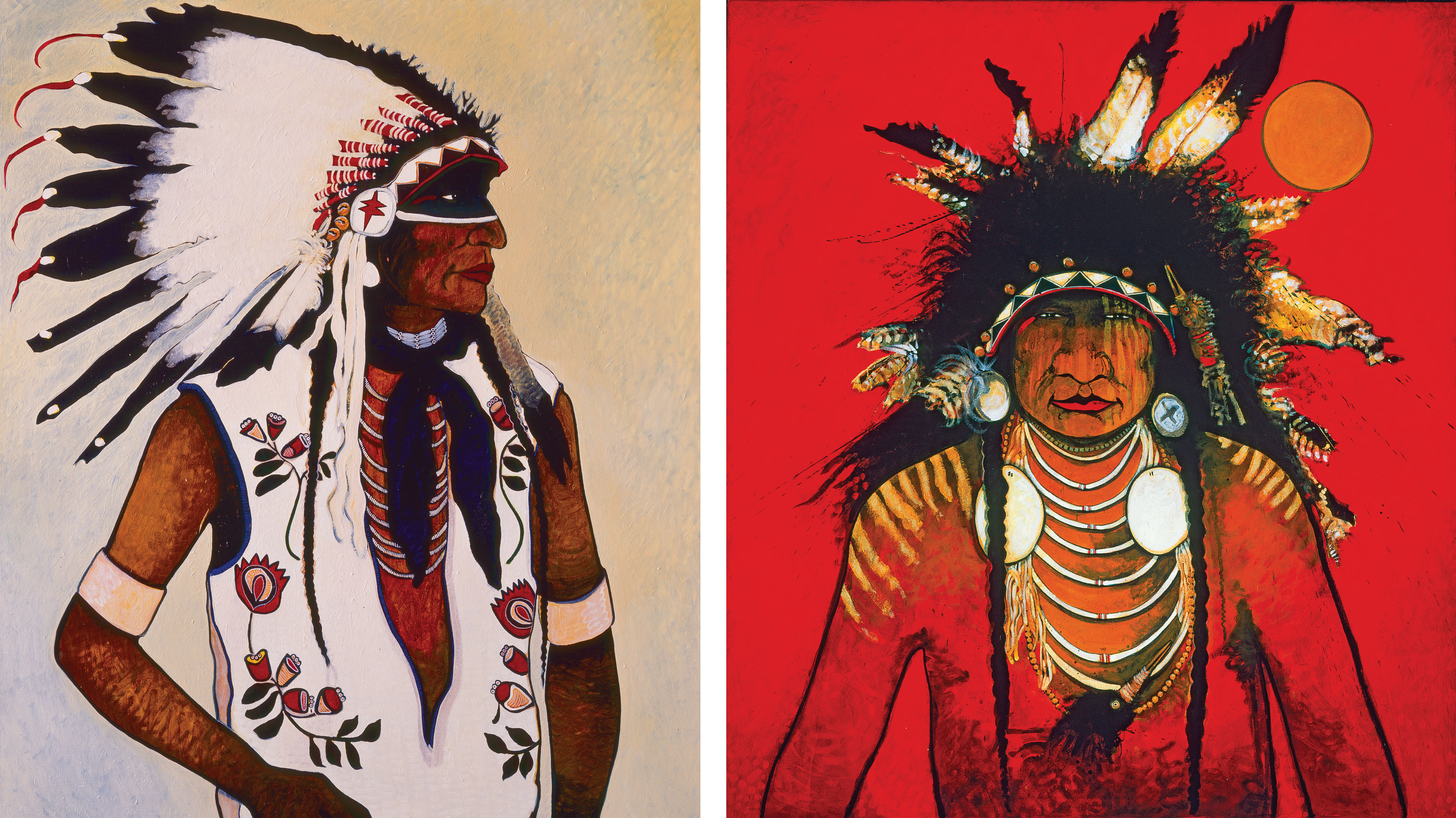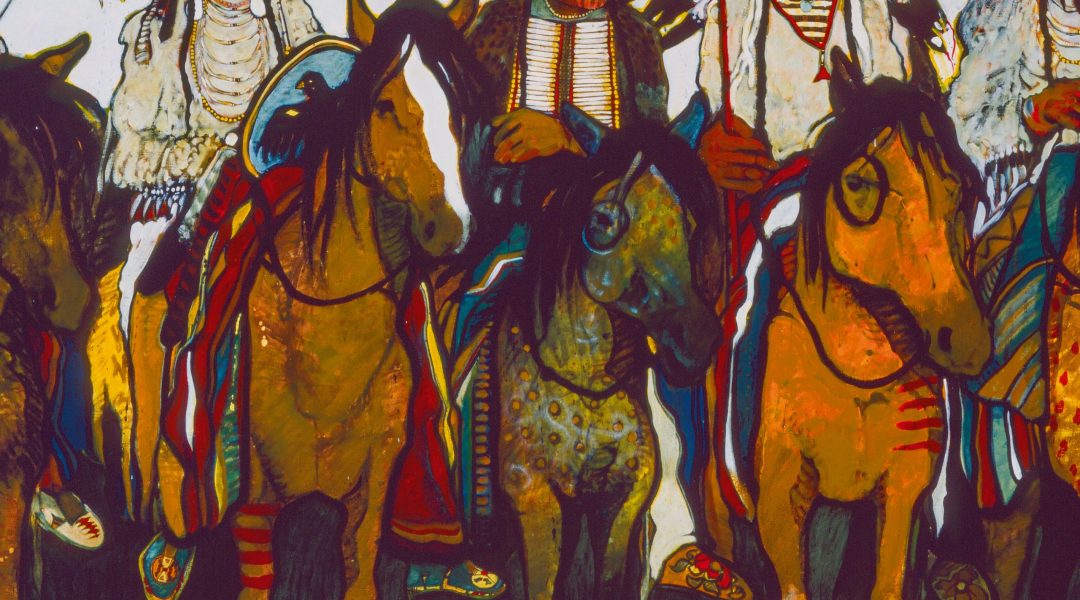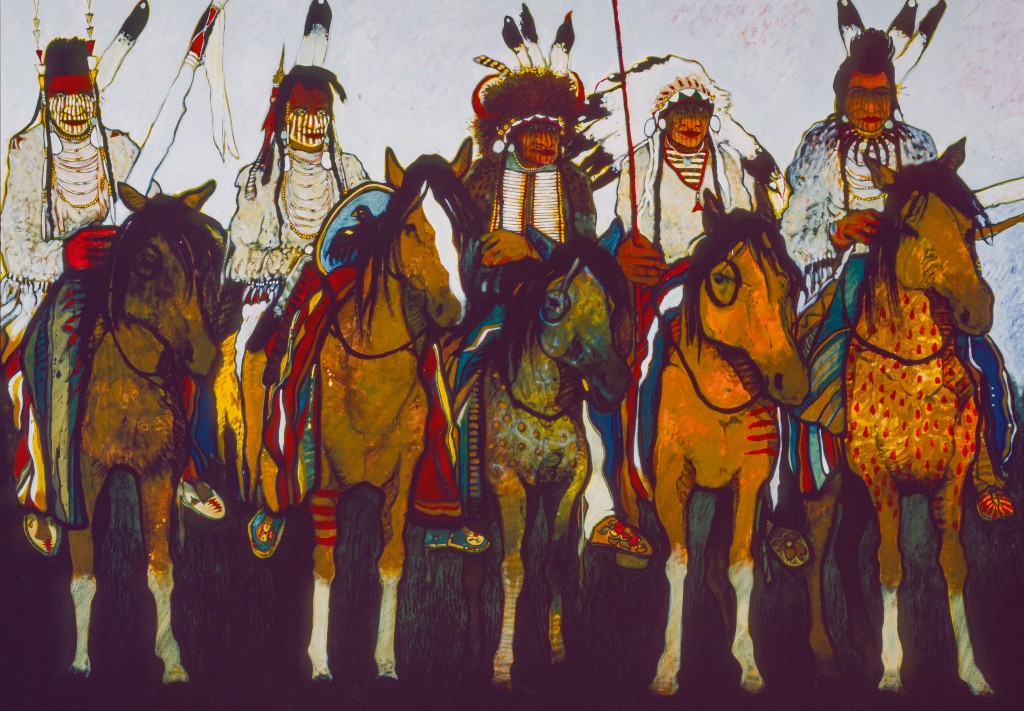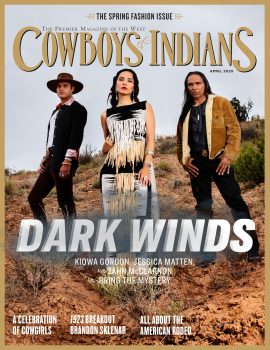Focusing on culture and history, the artist has become an ambassador for his Crow heritage and painted a path for others.
“Basically, I’m a romanticist,” preeminent painter Kevin Red Star (Crow) told the late writer Stephen Parks in Southwest Art in 1980. “I like that life of the old days, that closeness to nature. If there is an overall vision to my work, I guess it’s that there is a lot to be learned from the way things were.”
But Red Star had to leave the Crow reservation to really learn about the heritage — the leaders, horsemen, dancers, matriarchs, tepees, lands, and animals — that would become the strength and focus of his art.
Born in 1943 in Lodge Grass, Montana, Red Star grew up on tribal lands where generations of Crow had grazed their animals and hunted bison on grass-covered uplands. His father, who was a musician, horseman, and collector of Remington and Russell prints, and his mother, who was renowned for her fiber crafts and beadwork, nurtured the creativity of all nine of their children and encouraged their third oldest’s early love of drawing and music.

During Red Star’s grade-school years, Crow students were encouraged not to learn their language and their cultural heritage but to integrate into mainstream American life. So it must have been a revelation when he left Montana for Santa Fe in 1962 to become one of 150 students to attend the newly established Institute of American Indian Art. There he joined an inaugural class that included T.C. Cannon and Doug Hyde with faculty and administration that included Fritz Scholder, Allan Houser, and Charles Loloma. Red Star found himself in an environment that not only allowed him to delve into the history of Crow tribal culture through books and photographs, but also encouraged him to put the dignity and determination of his people on canvas.
“Many of us had come from places where we were treated badly by non-Indian instructors who looked down on you and didn’t promote you, even though you were good,” he recalls in the comprehensive Kevin Red Star: Crow Indian Artist(Gibbs Smith, 2014), a new book documenting his life and work by Daniel Gibson and Kitty Leaken. “It was a blessing to have that situation turned around, and given a better opportunity, the kids naturally excelled. We saw the instructors as successful people, personable professionals, and they were Indian artists. They were our models, at least mine.”
That shift made all the difference and set Red Star on a course to becoming a historian, recorder, and ambassador for his native Crow culture. In the ensuing decades, his painting has won him a reputation as one of the greats in contemporary American Indian art. His pieces depicting his Crow heritage can be found in permanent collections from the National Museum of the American Indian to the Denver Art Museum, the Whitney Museum of Western Art to the U.S. State Department.
At 71, Red Star continues to paint, dividing his time between Santa Fe and Montana, where he lives just off the reservation in Red Lodge and paints at his studio in nearby Roberts. “[He] is doing perhaps the best work of his entire career,” Gibson writes. “He has pushed out into unknown territory, scouting the global fine art terrain, ... [and has] returned to tell the tales and open a path for other Native artists to follow.”
Kevin Red Star: Crow Indian Artist by Daniel Gibson and Kitty Leaken is available on Amazon.com and at www.gibbs-smith.com. Kevin Red Star is represented by, among others, Windsor Betts Fine Arts in Santa Fe; Creighton Block Gallery in Bozeman, Montana; and Catherine Louisa Gallery in Billings, Montana.
From the February/March 2015 issue.















